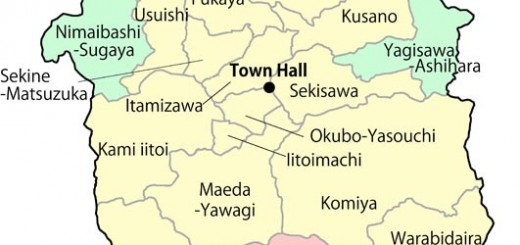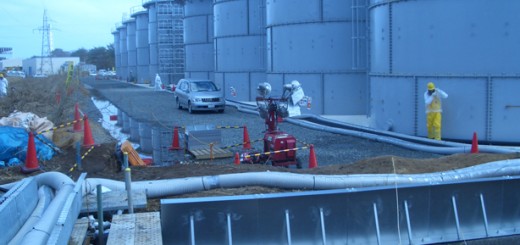Fukushima Now: As we enter the ninth year – what is meant by “reconstruction”?
by Yamaguchi Yukio, CNIC Co-Director
The calls for the “reconstruction of Fukushima” are cacophonous. A large part of the reason for this is next year’s Tokyo Olympics. Having won the bid to host the Games by declaring that Fukushima is “under control,” the government now wishes to pretend that the radiation problems never existed. Clearly, that means writing off the affected people. Of the radiation spewed out into the environment, cesium-134, with a half-life of about two years, has now passed through four half-lives in the eight full years since the accident, declining to (1/2)4 =1/16. Cesium-137, however, having a half-life of 30 years will not reach 1/2 for another 22 years.
In the first place, has the Fukushima accident now been fully explained? After the accident, four different accident investigation reports appeared, but all were incomplete. Members of the National Diet of Japan Fukushima Nuclear Accident Independent Investigation Commission (NAIIC) formed the Mokkai (familiarly, “Once More”) Accident Investigation Committee, which is now continuing efforts to clarify the causes and effects of the accident. The discussions are being made public in the Niigata Prefecture Technical Committee on Nuclear Power Safety Management (NPTC) and the Verification Supervisory Committee (chaired by Ikeuchi Satoru) is likely to come up with compelling findings.
At the end of January (2019), Yamamoto Akio, facilitator of the Atomic Energy Society of Japan (AESJ) Working Group following up on the as yet unelucidated accident items attended a meeting of the NPTC and gave an overview report on the investigative findings regarding problems extracted from 73 problem items. According to the report:
A: 45% may be judged as having been rationally explained,
B: 8% are thought to be unimportant from the viewpoint of the further sophistication of safety measures for existing nuclear power plants or the progress in decommissioning work,
C: 4% are of high importance but face difficulties in further investigation at present, and
D: 43% are important and should be subject to continued investigation.
The article by Ishikawa Tokuharu in the latest CNIC Tsushin (in Japanese) possibly falls under D, though AESJ may say it belongs to A. We hope that sincere discussions will take place with the members of the NPTC in future. While the views of AESJ cannot be accepted at face value, C and D together make up 47%. However you look at it, only half the problems have been explained.
Several important facts have surfaced regarding radiation effects.
1) It has come to light that in an analytical paper on residents’ exposure in Date City, data was used without consent from residents and, further, evaluation of the dose rate was estimated to be very low, about one-third the actual value. This paper has already been published in a British professional journal, and has also been used as materials for deliberations in the Radiation Council.
2) Immediately after the accident, it was revealed that an 11-year-old girl had been exposed to a thyroid equivalent dose of 100 millisieverts (a whole-body dose of 4 millisieverts). There must have been many more such cases, but they have not been uncovered.
3) In Miharu Town (Fukushima Prefecture, about 50km inland from the accident site), it is known that children were given iodine tablets in defiance of the prefecture’s instruction not to distribute the pills. What in fact happened? According to research group led by Kyoto University, in a paper published in January, around half the infants of age 0 to 2 years, and about two-thirds of the children between 3 and 9 years of age took the medication.
4) Details of the true state of radiation contamination in Koriyama City has been made clear by the self-published “Dokusa” (Poisoned Sand – published in December 2017). The late Hiroyuki Anzai, who worked extremely hard in the post-accident responses as a Fukushima Prefecture official, took scrupulous measurements of the air dose rate at 480 locations in the city by walking 500 to 600 kilometers between May and August 2015.
Although the fathomless suffering of the people affected by the accident cannot be atoned for by money, TEPCO has shown no intention of taking any responsibility for the consequences of the accident. In the incidents surrounding the petitions by Namie Town, Iitate Village and others to alternative dispute resolution (ADR), TEPCO has refused to agree to the compensation amounts, and rejected the mediated settlement proposal. The outlook for resolution of the compensation problem is bleak. This is in complete violation of the three pledges proclaimed by TEPCO: 1) Carry through compensation to the very last person, 2) Carry through rapid and detailed compensation, and 3) Respect mediated settlement proposals.
Roughly 30 class action lawsuits have been brought by Fukushima nuclear accident victims nationwide to question the responsibility of TEPCO. The criminal lawsuit brought against former top executives of TEPCO is also to reach its conclusion and sentencing in September.
Thus, we ask again – what is meant by “reconstruction”?


